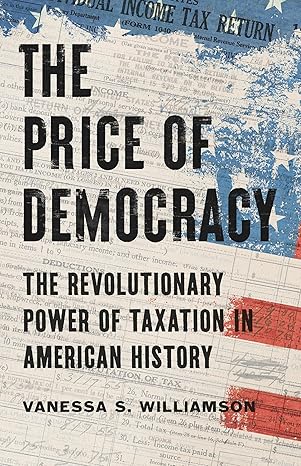New research by Morgan, Farkas, Hillemeier and Maczuga once again finds that when you take other student characteristics—notably family income and achievement—into account, racial and ethnic minority students are less likely to be identified for special education than white students.1 Though this finding is by now well established, it remains sufficiently controversial to generate substantial media buzz.2 And plenty of research—with less convincing methods—has been interpreted as showing that too many blacks, especially boys, are identified for special education.3 The old conventional wisdom may be intuitively appealing because aggregate disability rates—with no adjustments for family income or other student characteristics—are higher for students who are black (1.4 times) or Native American (1.7), and lower for whites (0.9) and Asians (0.5), with Hispanic students about as likely to be identified as the rest of the population.4
These unadjusted ratios answer the important descriptive question of how student experience varies by race. But they do not tell us whether schools are giving black students the free and appropriate public education the Individuals with Disabilities Education Act (IDEA) guarantees them. To answer this question, we must compare the likelihood that a black student participates in special education with that of an otherwise identical white student. In other words, we don’t just want to know if black students are more likely to be in special education than whites; we want to know if black students are too likely to be in special education—or, as it turns out, not likely enough.
The conventional wisdom that blacks are over identified for special education may finally be losing ground among academics, but continues to influence public opinion and be reflected in federal law and policy. I recap this academic debate, and briefly review some major disparities we observe along racial and ethnic lines in income and other non-school factors likely to influence the need for special education by the time children enter school. I argue against fixed thresholds for how much variance states should tolerate in districts’ special education identification rates across racial and ethnic groups, and for comprehensive social policies to help address disparities in children’s well being.
The debate over over representation in special education
In a 2002 National Research Council study, Donovan and Cross reviewed the literature and data on differences in special education participation by disability and racial/ethnic groups and cautioned against using unadjusted aggregate group-level identification rates to guide public policy.5 They crystallized the challenge of interpreting these differences: “If… we are asking whether the number identified is in proportion to those whose achievement or behavior indicates a need for special supports, then the question is one for which no database currently exists.”6
Differences in aggregation, covariates, and samples generate different answers to the question of whether black students are over- or under-identified for special education.7 The most credible studies allow researchers to control for a rich set of student-level characteristics, rather than using data aggregated to the district level, and firmly establish that blacks are disproportionately under-represented.
In 2010, Hibel, Farkas, and Morgan used the Early Childhood Longitudinal Study – Kindergarten Cohort (ECLS-K) 1998 and its follow-up waves to come closer to the ideal scenario described by Donovan and Cross.8 While individual-level models controlling only for race and gender showed blacks more likely to be identified, adding a family socioeconomic status variable eliminated the effect of race for blacks, while Hispanics and Asians were significantly less likely to be in special education. Adding a student test score made blacks less likely to be identified; Hispanics and Asians remained less likely to be identified as well.
A follow up study found this result applied across the five disability classifications studied, notably including emotional disturbance and intellectual disability, stigmatizing categories in which black boys are over represented in the aggregate, unadjusted data.9 While some have questioned the generalizability of the ECLS-K results due to sampling,10 the qualitative result has been replicated using the National Assessment of Educational Progress (the 2017 Morgan et al. study), the Education Longitudinal Study of 2002,11 and the ECLS-Birth Cohort.12 These national patterns do not preclude local heterogeneity. Sullivan and Bal studied one Midwestern urban school district and found that while socioeconomic controls attenuate the impact of race, black students remain more likely than others to be identified for special education; they did not include student achievement as a covariate.13
The “right” level of identification
Special education identification practices vary widely across and within states and districts – we do not know a “right” level. Few if any experts would argue that existing identification practices are ideal, or that identification rates reflect true prevalence of need. Beyond achievement and demographics, researchers have found that identification rates vary with school finance environments14 and state accountability frameworks.15
If you view participation in special education as providing critical services to appropriately identified students, the fact that a given black student is less likely to be placed in special education than an otherwise identical white student is deeply troubling. We do not want to live in a society where parents describe access to dyslexia (or other) services as “a rich man’s game.”16 It’s less troubling for those who view special education as stigmatizing and punitive, even for students who are appropriately identified — and indeed, we have little understanding of how well or poorly special education serves its students.
Federal policy on disproportionality
The Individuals with Disabilities Education Act aims to address equity by race and ethnicity; 2016 regulations further define the framework.1718 States must collect and review district-level data on how rates of identification—overall, by educational setting and disability category—vary across racial and ethnic groups with no adjustments for variables that correlate with need for services. If the gaps between groups exceed state-determined thresholds for “significant disproportionality,” the state must examine local policies and require the district to devote more of its federal special education funds to early intervention.19
While states will get to set their own cut-off risk ratios, they are highly unlikely to choose ratios that require uniform representation across groups. Each state then applies that threshold to all its districts. That means a district in which blacks and whites have similar poverty rates will be subject to the same threshold as one (in the same state) in which blacks have much lower income than whites.
Reporting by race and ethnicity is critical
Data on identification by race and ethnicity are essential for revealing patterns and outliers. They can prod districts and states to examine their special education policies and practices, potentially identifying ones that unintentionally yield discriminatory results, and shine a light on groups in need of greater early intervention resources.
For example, the preamble to the disproportionality regulations notes that unequal autism identification rates across groups may reflect disparities in access to medical care, suggesting that the district offer early developmental screenings. Indeed, research shows that among Medicaid-eligible children with autism diagnoses, white children are diagnosed over a year earlier than black children.20
We do not want to live in a society where parents describe access to dyslexia (or other) services as “a rich man’s game.”
The Department of Education’s guidance notes that significant disproportionality could result from “appropriate identification, with higher prevalence of a disability, among a particular racial or ethnic group.” In other words, exceeding the risk ratio could be appropriate and acceptable: this level of nuance could easily be missed, while the state’s numeric threshold remains salient.21 The result could be states and districts feeling pressured to produce equal rates of identification across groups—by denying services to students who need them. Unsurprisingly, Morgan and Farkas have argued against these regulations while offering up their own alternatives.22
Unadjusted disproportionality reflects more than educational practices
Even if schools treated all students the same, special education identification rates would likely differ across racial and ethnic groups. The disproportionality literature consistently notes that children’s outcomes are causally affected by out-of-school factors such as poor nutrition, stress, and exposure to environmental toxins, and that exposure to these influences unduly affects poor children and children of color. The unfortunate implication of this—that true prevalence of disability may be higher for these students—can get lost in the back and forth over measurement, sampling, and other methodological issues. Some numbers are worth noting:
- Black children were three times as likely to live in poor families as white children in 2015. 12 percent of white and Asian children lived in poor families, compared with 36 percent of black children, 30 percent of Hispanic children, 33 percent of American Indian children, and 19 percent of others.23
- Food insecurity affects 23 percent of black-headed households and 19 percent of Hispanic-headed households, compared with 9 percent of households headed by whites.24
- Black children are over twice as likely to have elevated blood lead levels as whites, and low-income children over three times as likely as others.25
- The poor are more likely to live near hazardous waste sites.26
We need more comprehensive social policy to help disadvantaged children
We need to work towards better identification practices in special education. We also need to help states and districts collect and report race- and ethnicity-specific rates. But forcing states to establish uniform standards is dangerously inconsistent with the IDEA mandate of a free and appropriate public education for all. When identifying another student pushes a district over a risk ratio threshold, the district faces a clear incentive to under identify—that is, to withhold services from—children who already face a broad array of systemic disadvantages.
Instead, we should focus on building a better safety net and reducing child poverty. Luckily, policymakers have plenty of proven levers: expand income support for families as the EITC,27 reduce food insecurity while improving maternal health and birth outcomes through a robust SNAP,28 maintain children’s access to Medicaid,29 and continue to work towards improving the equity and quality of general education.30
While encouraging school districts to avoid “disproportionality” surely comes from an idealistic place, schools cannot do it alone. Ignoring the harsh realities of racial disparities outside of school is likely to hurt those very children advocates seek to protect.
-
Footnotes
- Morgan, P.L., Farkas, G., Hillemeier, M.M., & Maczuga, S. 2017. Replicated Evidence of Racial and Ethnic Disparities in Disability Identification in U.S. Schools. Educational Researcher, 46:6, 305-322. From: http://journals.sagepub.com/doi/abs/10.3102/0013189X17726282
- Barnum, M. “Many worry that students of color are too often identified as disabled. Is the real problem the opposite?” Chalkbeat, August 27, 2017 From: https://www.chalkbeat.org/posts/us/2017/08/27/many-worry-that-students-of-color-are-too-often-identified-as-disabled-is-the-real-problem-the-opposite/
- Camera, L. “New Study Questions Links Between Race, Disability in Students.” U.S. News and World Report, August 31, 2017. From: https://www.usnews.com/news/education-news/articles/2017-08-31/new-study-questions-links-between-race-disability-in-students
- Artiles, A. J., Kozleski, E.B., Trent, S.C., Osher, D., & Ortiz, A. 2010. Justifying and Explaining Disproportionality, 1968-2008: A Critique of Underlying Views of Culture. Exceptional Children, 76:3, 279-299. From: http://aartiles.faculty.asu.edu/publications_files/2010_Artiles-etal_Culture-Disproport-EC.pdf
- U.S. Department of Education. 38th Annual Report to Congress on the Implementation of the Individuals with Disabilities Education Act, 2016. From: https://www2.ed.gov/about/reports/annual/osep/2016/parts-b-c/38th-arc-for-idea.pdf
- National Research Council, 2002. Minority Students in Special and Gifted Education. The National Academies Press. From: https://www.nap.edu/catalog/10128/minority-students-in-special-and-gifted-education
- Ibid., p. 35
- Morgan, Paul L., George Farkas, Michael Cook, Natasha M. Strassfeld, Marianne M. Hillemeier, Wik Hung Pun, and Deborah L. Schussler. 2017. Are Black Children Disproportionately Overrepresented in Special Education? Exceptional Children 83:2. From: http://journals.sagepub.com/doi/full/10.1177/0014402916664042
- Hibel, J., Farkas, G., & Morgan, P.L. 2010. Who Is Placed into Special Education? Sociology of Education, 83:4, 312-332. From: http://journals.sagepub.com/doi/abs/10.1177/0038040710383518
- Morgan, P.L., Farkas, G., Hillemeier, M.M., Mattison, R., Maczuga, S., Li, H., & Cook, M. 2015. Minorities Are Disproportionately Underrepresented in Special Education. Educational Researcher, 44:5, 278-292. From: http://journals.sagepub.com/doi/abs/10.3102/0013189X15591157
- Skiba, R.J., Artiles, A.J., Kozleski, E.B., Losen, D.J., & Harry, E.G. 2016. Risks and Consequences of Oversimplifying Educational Inequities. Educational Researcher, 45:3, 221-225. From: http://journals.sagepub.com/doi/full/10.3102/0013189X16644606
- Shifrer, D., Muller, C., & Callahan, R. 2014. Disproportionality and Learning Disabilities: Parsing Apart Race, Socioeconomic Status, and Language. Journal of Learning Disabilities, 44:3, 246-257. From: https://www.ncbi.nlm.nih.gov/pmc/articles/PMC4133990/
- Morgan, Paul L., George Farkas, Marianne M. Hillemeier, and Steve Maczuga. 2012. Are Minority Children Disproportionately Represented in Early Intervention and Early Childhood Special Education? Educational Researcher 41:9, 339-351. From: https://www.ncbi.nlm.nih.gov/pubmed/24683265
- Sullivan, A.L. & Bal, A. 2013. Disproportionality in Special Education: Effects of Individual and School Variables on Disability Risk. Exceptional Children, 79:4, 479-494. From: http://journals.sagepub.com/doi/pdf/10.1177/001440291307900406#articleCitationDownloadContainer
- Dhuey, E. & Lipscomb, S. 2011. Funding Special Education by Capitation: Evidence from State Finance Reforms. Education Finance and Policy, 6:2, 316-331. From: http://www.mitpressjournals.org/doi/abs/10.1162/EDFP_a_00031
- Dhuey, E. & Lipscomb, S. 2013. Funding Special Education by Total District Enrollment: Advantages, Disadvantages, and Policy Considerations. Education Finance and Policy, 8:3, 168-201. From: http://www.mitpressjournals.org/doi/full/10.1162/EDFP_a_00098
- Tuchman, S. 2017. Education Policy Factors Contributing to Special Education Identification. Theses and Dissertations, University of Arkansas, Fayetteville. From: http://scholarworks.uark.edu/cgi/viewcontent.cgi?article=3508&context=etd
- Hanford, E. “Hard to Read: How American schools fail kids with dyslexia.” APM Reports, September 11, 2017. From: https://www.apmreports.org/story/2017/09/11/hard-to-read
- The law and regulations and other resources can be found at: https://ideadata.org/resource-library/listing/?search=&topics=569933ee150ba0114f8b45c7
- For excerpted public comments on the regulation, see: “Identifying Minorities in Spec. Ed: Defining ‘Too Many’”, Education Week, August 2, 2016. http://www.edweek.org/ew/articles/2016/08/03/identifying-minorities-in-spec-ed-defining-too.html
- For a description of risk ratio calculations, thresholds, and state-level data on how many districts exceed the ratio, see: U.S. Department of Education. Racial and Ethnic Disparities in Special Education, 2016. From: https://www2.ed.gov/programs/osepidea/618-data/LEA-racial-ethnic-disparities-tables/disproportionality-analysis-by-state-analysis-category.pdf
- Mandell, D.S., Listerud, J., Levy, S.E., & Pinto-Martin, J.A. 2002. Race Differences in the Age at Diagnosis Among Medicaid-Eligible Children With Autism. Journal of the American Academy of Child and Adolescent Psychiatry, 41:12, 1447-1453. From: http://www.jaacap.com/article/S0890-8567(09)60739-5/abstract
- U.S. Department of Education. Significant Disproportionality, 2016, 2. From: https://sites.ed.gov/idea/files/significant-disproportionality-qa-03-08-17-1.pdf
- Morgan, P.L. & Farkas, G. “Is Special Education Racist?” The New York Times, June 24, 2015. From: https://www.nytimes.com/2015/06/24/opinion/is-special-education-racist.html
- Morgan, P.L. & Farkas, G. “The Wrong and Right Ways to Ensure Equity in IDEA.” Education Next, August 10, 2016. From: http://educationnext.org/the-wrong-and-right-ways-ensure-equity-idea/
- Yang, J., Granja, M.R., & Koball, H. 2017. Basic Facts About Low-Income Children: Children Under 18 Years, 2015. National Center for Children in Poverty. From: http://www.nccp.org/publications/pub_1170.html
- U.S. Department of Agriculture. Food Security Status of U.S. Households with Children in 2016. From: https://www.ers.usda.gov/topics/food-nutrition-assistance/food-security-in-the-us/key-statistics-graphics.aspx#children
- Centers for Disease Control and Prevention. Blood Lead Levels in Children Aged 1-5 Years – United States, 1999-2010. From: https://www.cdc.gov/mmwr/preview/mmwrhtml/mm6213a3.htm
- Currie, J., Greenstone, M., & Moretti, E. 2011. Superfund Cleanups and Infant Health. American Economic Review, 101:3, 435-441. From: http://www.jstor.org/stable/29783785?seq=1#page_scan_tab_contents
- Whitehurst, G.J. “This policy would help poor kids more than universal pre-K does.” Brookings Institution, July 30, 2016. From: https://www.brookings.edu/opinions/this-policy-would-help-poor-kids-more-than-universal-pre-k-does/
The Brookings Institution is committed to quality, independence, and impact.
We are supported by a diverse array of funders. In line with our values and policies, each Brookings publication represents the sole views of its author(s).








